- Home
- T. J. English
Westies
Westies Read online
EARLY BIRD BOOKS
FRESH EBOOK DEALS, DELIVERED DAILY
BE THE FIRST TO KNOW—
NEW DEALS HATCH EVERY DAY!
The Westies
Inside New York’s Irish Mob
T. J. English
A MysteriousPress.com
Open Road Integrated Media ebook
For John Patrick English.
Wherever he might be.
ACKNOWLEDGMENTS
Contrary to popular opinion, no book—especially a first book by a novice author—is compiled in isolation. For their assistance I would like to thank my friend and colleague Bob Callahan, who got the project rolling in the first place, and my agent, Barbara Lowenstein. Gale Dick provided invaluable help with the historical research, and my brother, Terry English, formerly a Green Beret captain in Vietnam, showed me how to read often cryptic military records. I’d also like to thank my longtime friend and fellow journalist Frank “the Crusher” Kuznik, who provided the encouragement and criticism any writer needs to slog his or her way through the muck; and Lisa Wager, my editor, who wasn’t afraid to take the manuscript into a back room and slap it around a bit. I’m also indebted to William Urshal, Tom Dunne, and Michael Daly for their contributions.
There are hundreds of lawyers, cops, gangsters, and neighborhood people from the West Side of Manhattan whom I could thank. At the risk of leaving someone out (or, given the subject matter of the book, naming someone who would rather remain anonymous), I’ll offer a blanket “thank you” to all—you know who you are. I would be remiss, however, if I didn’t offer special thanks to Lawrence Schoenbach, Esq., Richie Egan, and everyone at the law firm of Hochheiser and Aronson.
Finally, I’d like to thank Francis and Marcelle Featherstone for staying in touch as long as they could.
1.–Church of the Sacred Heart, 457 West 51st Street (between 9th and 10th Avenue): Michael “Mickey” Spillane marries Maureen McManus, August 27, 1960; Billy Bokun marries Carol Collins, Flo and Tommy’s daughter, May 26, 1985.
2.–The White House Bar, 637 10th Avenue (at 45th Street), extinct, now the site of the Tenth Avenue Jukebox Cafe: Mickey Spillane’s place.
3.–501½ West 43rd Street (between 10th and 11th Avenue): Mickey Featherstone’s childhood home.
4.–The Market Diner, 572 11th Avenue (at 43rd Street).
5.–The Sunbrite, 736 10th Avenue (between 50th and 51st Street), extinct, now the site of Robert’s Restaurant.
6.–Sonny’s Cafe, 678 9th Avenue (between 46th and 47th Street), extinct, now the site of Midtown Bicycles: Mickey Featherstone gets a handgun from Jimmy Coonan to use at the Leprechaun Bar, September 30, 1970.
7.–The Leprechaun Bar, 608 9th Avenue (between 43rd and 44th Street), extinct, now the site of the Sea Palace.
8.–The 596 Club, 596 10th Avenue (at 43rd Street), extinct, now the site of J. T. Hudson’s Restaurant: Jimmy Coonan’s bar from 1972–79.
9.–444 West 48th Street (between 9th and 10th Avenue): Home of Denis Curley.
10.–452 West 50th Street (between 9th and 10th Avenue): Flophouse apartment shared by Billy Beattie and Paddy Dugan, among others.
11.–442 West 50th Street (between 9th and 10th Avenue): 1975 home of Alberta Sachs, Jimmy Coonan’s thirteen-year-old niece.
12.–Amy’s Pub, 856 9th Avenue (between 55th and 56th Street): Mickey Featherstone meets Sissy, December 1975.
13.–The Stoplight, 875 10th Avenue (at 57th Street), extinct, now the site of Armstrong’s Saloon: Michael Holly’s bar.
14.–Tom’s Pub, 854 9th Avenue (between 55th and 56th Street): Coonan and Featherstone pick up Rickey Tassiello, January 18, 1978.
15.–747 10th Avenue (at 51st Street): Tony Lucich’s apartment.
16.–New York Central Railroad tracks, 49th Street between 10th and 11th Avenue: Site of police diggings, October 1978.
17.–434 West 49th Street (between 9th and 10th Avenue): Jimmy Coonan’s childhood home.
18.–International Longshoremen’s Association Headquarters, 12th Avenue at 48th Street; Vincent Leone’s office.
19.–The Landmark Tavern, 11th Avenue at 46th Street: Coonan and Featherstone shake down ILA official John Potter, November 1978.
20.–Fran’s Card Shop, 746 9th Avenue (between 50th and 51st Street), extinct, now the site of Carewell Pharmacy: Card shop was run by Fran, Tony Lucich’s wife; drop site for some of Coonan’s loanshark payments.
21.–Westway Candy Store, 827 10th Avenue (between 54th and 55th Street), extinct, now the site of Oscar’s Deli and Grocery.
22.–520 West 56th Street (between 10th and 11th Avenue), Apartment 15B: Mickey and Sissy’s home in Hell’s Kitchen.
23.–Manhattan Plaza, 400 West 43rd Street (at 10th Avenue): Henry Diaz’s corpse thrown from a window, January 1981.
24.–Clinton Towers, 790 11th Avenue (between 54th and 55th Street): Jimmy McElroy and Tommy and Flo Collins’s apartment building.
25.–The Madison Diner, 600 West 57th Street (at 11th Avenue): ILA officials John Potter and Tommy Ryan meet with Featherstone, McElroy, and Kevin Kelly, March 1984.
26.–35th Street, between 10th and 11th Avenue: Michael Holly killed, April 25, 1985.
27.–Erie Transfer Co., 624 West 52nd Street (between 11th and 12th Avenue): Featherstone’s place of employment 1984–85.
28.–Carpenters Local 608, 1650 Broadway (entrance on 51st Street): John O’Connor shot as he enters an elevator, May 7, 1986.
CONTENTS
Acknowledgments
Prologue
Part I
1: The Ghosts of Hell’s Kitchen
2: Last of a Dying Breed
3: Jimmy Sows His Oats
4: Mickey
5: Poetic Justice
Part II
6: No Corpus Delicti, No Investigation
7: Doin’ Business
8: West Side Story
9: Linguini and Clam Sauce
10: Having a Drink on Whitey
11: The Feds and Little Al Capone
12: The Westies, Once and for All
Part III
13: Bad Blood
14: Betrayal
15: In the Interest of Justice
16: Mickey’s New Friends
17: What Goes Around, Comes Around
Epilogue
Afterword
Author’s Note
What follows is a work of nonfiction. The events described are true and the characters are real.
While much of the dialogue in the book is taken directly from court transcripts, legal wiretaps, and electronic eavesdropping devices, in many cases it was based on interviews with the actual participants. It should be recognized that trial testimony and interviews sometimes produce conflicting versions of events. Where such conflict exists in testimony or recollection, the author has sought to provide a version of the facts which is in his opinion the most plausible. In addition, certain scenes have been dramatically re-created and in some cases a series of meetings or events condensed to provide narrative clarity.
“Good morning, gentlemen.… Nice day for a murder.”
—Jimmy Cagney as Rocky Sullivan
in Angels with Dirty Faces
PROLOGUE
At approximately 6:30 A.M. on the morning of November 4, 1987, Francis Thomas “Mickey” Featherstone awoke in a cold sweat. He tossed and turned in his bed, then sat upright. For a moment, he didn’t know where he was. His heart was pounding and his eyes stinging as he peered into the surrounding darkness. Slowly, he was able to make out the familiar stone walls, the grungy toilet, the overhead bunkbed, and the forbidding metal door of his cell. Featherstone let out a sigh of relief and wiped the sweat from his brow with an already soaked bedsheet. Thank God, he said to himself, it’s only prison.
Featherstone’s night had been filled with bad dreams. He remembered seeing hundreds of human hands, pale and disembodied, reaching through the bars of a dingy prison cell. Then he saw himself on the floor of what looked like a hotel room, his wrists and ankles bound together with wire. He was surrounded by four or five conservatively dressed people—professional people. One of them, a man, put a gun to Featherstone’s head and pulled the trigger. He felt the pain, saw the blood spurt past his eyes. Then he woke up.
Over the course of his often troubled thirty-nine years, Featherstone had grown accustomed to nightmares like this. But it had been a while since he’d seen the images so clearly. Not since the early 1970s anyway, when, after returning from a stint in Vietnam, his near sleepless nights were frequently filled with severed body parts, glistening blood, and the sounds of incoming fire. Over the years he’d talked to many psychiatrists about these dreams and they all told him the same thing. “Post-traumatic stress syndrome,” they called it, using the popular post-Vietnam euphemism for battle fatigue.
As the years wore on and Featherstone gained distance from his war memories, the bad dreams subsided. More recent psychiatric evaluations gave him a clean bill of health. The nightmares would recur only if he were to engage in an “anxiety-inducing undertaking,” according to a psychiatrist he’d seen just weeks earlier.
An anxiety-inducing undertaking. Featherstone had to laugh when he heard it put that way. With his eleventhgrade education, it was a phrase he’d never have used himself, though he had to admit in its own cold and clinical way it was a perfect description of what he was about to embark on.
Featherstone got up from his mattress and made his way to a porcelain sink near the toilet. He let the water run until it was good and cold, then cupped his hands under the faucet and splashed his face. He looked at his reflection in the mirror and saw the familiar crescent scar on his neck, the disheveled sandy-blond hair, the droopy mustache and hazel, forlorn eyes of a hardened convict.
The cool water ran down his chest and back, sending a ripple of pleasure through his taut five-foot-nine-inch frame. The images of violence and terror from his dreams had already begun to recede.
Mickey Featherstone was ready to face the day.
Hours later, two United States marshals met Featherstone at his cell. Now dressed in a conservative light-brown suit, his hair newly trimmed and groomed, he submitted to a brief security check. Then the marshals led him down a long corridor which served as a passageway from New York City’s Metropolitan Correctional Center (MCC), where he was incarcerated, to an adjacent building—the federal courthouse at Foley Square in lower Manhattan. Inside the courthouse, they took him to a sparsely furnished room with a large mahogany conference table, where he sat quietly until a breakfast of eggs, toast and coffee arrived. Featherstone tried to eat, but even this bland combination of tastes was too unsettling to his stomach. He pushed the food aside.
As a soldier stationed along the Mekong Delta during the war, then as a gangster and convicted killer back home in New York City, and finally as an inmate at Attica State Prison, Sing Sing, Rikers Island, and a half-dozen other federal and state penitentiaries, Featherstone had tried to eliminate fear from his emotional makeup. Too many times in his life he’d seen otherwise competent people paralyzed by fear at the moment of decision, usually resulting in the person’s getting beaten, busted or something much worse. He’d learned over the years to submerge his own fears. The only place they had free rein was in his dreams.
But now, in this room on this morning in November of 1987, Featherstone’s hand shook as he tried to drink his coffee. He was scared, no doubt about it. For in just a few short minutes he would be taken to Room 506 of U.S. District Court. There he would do something he’d always promised himself would never happen—he’d willingly take the stand to testify against his own people. To the court, the press, and the city-at-large, these people were known as the Westies, a gang of racketeers who had risen from the streets of Manhattan to the highest levels of organized crime. To Featherstone, they were the people he knew best, many of them close friends since childhood.
Mary Lee Warren, an assistant U.S. attorney for the Southern District of New York, entered the room to begin preparing Featherstone for the day’s testimony. He heard her voice and the familiar litany of crimes they’d be covering, but the words had no impact. So many hours, days and months had been spent relating the details of his past to cops, lawyers and representatives of the federal government that they no longer felt like his memories. At times, it seemed to Featherstone like his entire past was now the property of the U.S. Attorney’s office.
After Warren left the room, the two federal marshals led Featherstone down the hallway and onto a dingy freight elevator with metal caging. As the elevator descended, the fear Featherstone had been feeling that morning slowly gave way to a more familiar emotion: anger. He felt anger at those who’d forced him into this position; anger at those who’d made it impossible for him to look at himself in the mirror without feeling disgust; anger at everyone everywhere who’d ever done him wrong.
By the time the freight elevator clanged open and Featherstone entered the courtroom, he felt better. For the first time in many months, he could remember clearly why he was here. He could remember his motivation.
Revenge.
“Mr. Featherstone,” asked Warren, standing in front of the jury box, “have you ever heard the term ‘Westies’?”
“Yes.”
“Is that a term that you use?”
“No.”
“Is it a term you heard used?”
“Yes, ma’am.”
“Where have you heard it used?”
“The newspapers and the police.”
“And what do you understand the term ‘Westies’ to apply to?”
“Me. People here. Different neighborhood people.”
“And during what period of time did this group operate?”
“Well, there’s always been a group in my neighborhood, since I could remember, committing crimes.”
Featherstone was not being coy. The Westies had always been a nebulous group, and until he took his place on the witness stand, not even he had known exactly who the defendants would be. Nor did he know the specific charges. He had a vague idea, of course, since the bulk of the government’s case was based on information he’d been giving them for the past eighteen months. But because he didn’t know exactly how they would corroborate his claims, and since they were legally prohibited from discussing the case with him in any detail, he couldn’t be sure who’d been indicted.
At first, he could hardly even tell where the defense area was. Room 506, known as “the showroom” to the local press corps who regularly cover the courts, was a majestic, high-ceilinged affair presently overflowing with nearly 200 spectators, a dozen lawyers, twelve jurors, six alternate jurors, and a half-dozen federal marshals lining the walls. Even if Featherstone hadn’t spent the last three years of his life cooped up in a tiny prison cell, it would have been an unnerving sight.
Eventually, after adjusting to the grandeur of the place, his eyes focused on the defendants and their attorneys, seated less than twenty feet away. Although dressed uncharacteristically in “respectable” courtroom attire—suits, ties and plain-colored dresses—these were, for the most part, the people he’d expected to see, the people he’d run with in the tough Manhattan west side neighborhood known as Hell’s Kitchen.
At the far left Featherstone saw the familiar faces of Tommy Collins and his wife Flo—both white-haired and in their fifties—looking like everybody’s favorite Irish aunt and uncle. To their left was Richard “Mugsy” Ritter, with thinning hair and a jet-black mustache, looking dapper in a brand-new pin-striped suit. Further down the table, seated with his attorney, was Billy Bokun, whose most notable feature was a large reddish birthmark that covered one whole side of his face. At thirty-one, Bokun was the youngest of the defendants.
At a ninety-degree angle,
completing the expansive L-shaped seating arrangement, was another equally crowded table. First in line, as Featherstone looked from left to right, was lean, mean Johnny Halo, almost unrecognizable in wire-rimmed glasses and closely cropped black hair. Down the table from Johnny was James McElroy, known to Featherstone and just about everyone else on the West Side as Jimmy Mac. The tallest of the group at six-foot-one, McElroy had broad shoulders, dark hair, and the hardened good looks of a former boxer, which he was. And next to McElroy, seated with her attorney, was stout, formidable Edna Coonan, wife of James “Jimmy” Coonan, the man the government had already identified as the leader of the Westies.
Finally, Featherstone came to the eighth and final defendant, who sat closest to him. More than any other, this was the man he’d been waiting to see; the man whose actions, he felt, were the main reason this group of West Siders now found themselves in this strange environment, where highly educated people wore fine new clothes and spoke with impeccable grammar.
At five-feet-nine-inches tall, with blond hair, blue eyes, and a broad, cherubic face, forty-year-old Jimmy Coonan didn’t look like a cold-blooded killer. He looked more like a cop, perhaps, or an aging altar boy. But Featherstone knew this was only a facade. He’d stood by this man and at times actively participated with him in unspeakable acts of violence. Partly, he’d done so for business reasons. But also he’d done so out of allegiance, out of love.
In the old days, these violent acts had seemed almost acceptable to Featherstone. In Hell’s Kitchen—the neighborhood where he and Jimmy had grown up together—you chose between good and evil at a young age. If you chose evil, then violence became an important means of communication; a way of showing a friend just how far you were willing to go to prove your friendship. Featherstone had always believed that’s what he and Jimmy were doing—sealing their friendship. Sealing it in blood.

 Havana Nocturne
Havana Nocturne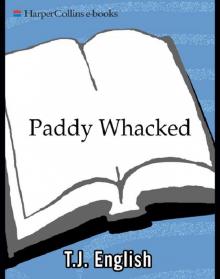 Paddy Whacked
Paddy Whacked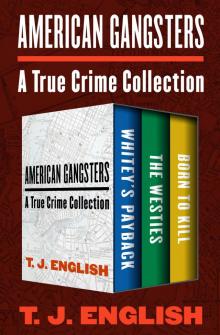 American Gangsters
American Gangsters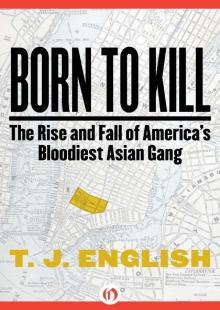 Born to Kill
Born to Kill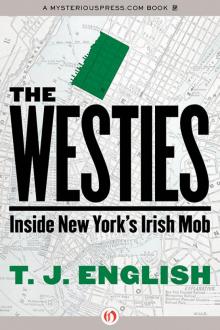 Westies
Westies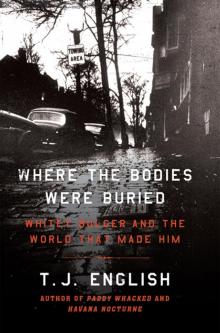 Where the Bodies Were Buried
Where the Bodies Were Buried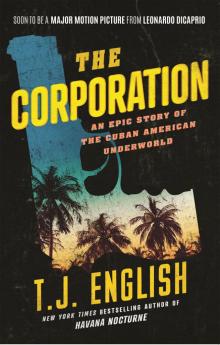 The Corporation
The Corporation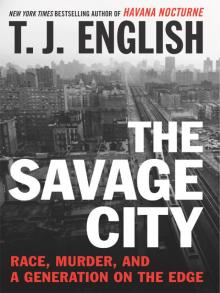 The Savage City
The Savage City